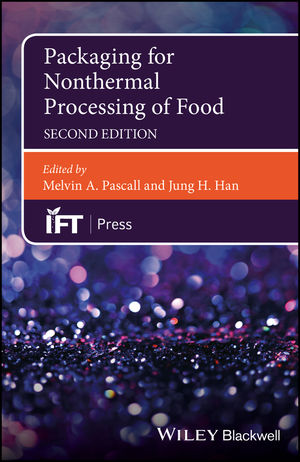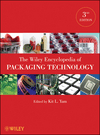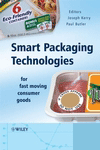Food industry focuses on better packaging and smarter process technology for less spoilage










In the developing countries, one out of six children is undernourished, which amounts to an overall figure of 100 million. The United Nations (UN) estimates that undernourishment causes the deaths of 2.6 million children under five years old per year. This means that hunger is still one of the biggest scourges of humanity.
Yet no one should have to go hungry. Every year some 1.3 billion tons of food worldwide ends up being thrown away – a conclusion of the current report “Food Wastage Footprint: Impacts on Natural Resources” of the Food and Agriculture Organisation of the United Nations (FAO). If food losses were reduced by using food more prudently, famines could be curbed.
Fifty-four percent of wasted food, says the report, is lost during production, post-harvest treatment and storage. Particularly badly affected are the poorer countries of Africa and Asia where shortcomings during harvesting and logistics destroy 6 to 11 kg of food per capita each year. Exposed to heat, fruit and milk spoil, and meat is rendered inedible by contamination with dangerous germs. On the other hand, wastage during processing, transport and consumption is more a problem of the industrialized nations. In Europe and North America, some 100 kg of food is thrown away per person and year although it is still fit for consumption. Demands for a change of attitude are therefore coming from the highest authorities. At his general audience during World Environment Day last June, Pope Francis called for an end to consumerism and the wastage of food.
Central theme of interpack 2014
Industry has already got the message. According to a current study by the Royal Melbourne Institute of Technology in Australia, suitable packages are capable of reducing food loss considerably. Developers are therefore working hard on new concepts for packaging machines, the related process technology and “smart” packages. A total of 100 companies from the entire food value chain, from production, retailing and packaging through to logistics, are now participating in the SAVE FOOD Initiative, a joint project of the FAO, the United Nations Environment Programme (UNEP) and Messe Düsseldorf GmbH (mdna.com). Its goal is to foster dialogue between industry, research, the political sphere and civil society on the subject of food loss. Reducing spoilage will also be the central theme at the Innovationparc Packaging at the trade fair interpack PROCESSES AND PACKAGING 2014, in Düsseldorf, Germany. Exhibitors at this special Innovationparc will present their ideas on how food can be protected better from May 8 – 14, 2014. Furthermore, during the SAVE FOOD Conference at Messe Düsseldorf’s Congress Center South on May 7 and 8, 2104, experts from politics, industry and society will be exchanging views on food loss and wastage.
The sector has a lot of work ahead of it. Farmers in Africa first have to be convinced that it is better to package their produce at source than to send it off unprotected. It is not high tech that is called for here, but education locally. Representatives of companies like Bosch, for example, therefore toured emerging and developing countries with mobile packaging machines some years back in order to demonstrate to farmers the advantages of packaged foods.
The throwaway mentality of the Western world, on the other hand, is even more difficult to combat. According to a survey by Berndt + Partner management consultants, 20 – 25% of food in Europe is thrown away even though it is still fit for consumption. One contributory factor is the “best before date” that has to be printed on all food packages. Once it is reached, food is often discarded. However, “best before” does not mean that food is no longer edible after this date, but merely that its color and consistency may change. The currently still widespread large packs worsen the problem. The best before date is often reached before the package contents have been consumed.
Smaller, customized packages should help to solve the problem. “In our view, portioned packages for one-person households, for example, can help to stem food wastage,” says Christian Traumann, Managing Director of packaging specialist MULTIVAC Sepp Haggenmüller.
Creative package solutions
Reporting continuously on a product’s state of freshness, time/temperature indicators are another approach in the battle against spoilage and waste. A useful feature is that they make any breaks in the cooling chain visible, for instance. BASF and the Swiss Freshpoint company are already producing labels containing a special pigment which are printed straight onto the package. The color changes when the contents spoil.
Research is also being conducted on active packages that interact with their contents. PET bottles are treated with oxygen absorbers like iron so that oxygen sensitive beverages such as beer and fruit juice keep for longer. Then there are films enriched with preservatives like sorbic acid that combat germ proliferation on foods. Critics claim that the additional chemicals on active packages impair the products’ natural quality. In their search for a remedy, scientists of the Fraunhofer Institute for Process Engineering and Packaging (IVV) in Freising, Germany, are developing antimicrobial materials based on plant extracts, e.g. from rosemary. “This way, food manufacturers can go further towards meeting the consumer’s wish for natural, health-promoting products,” says IVV materials developer Sven Sängerlaub.
The downside of many food-saving packages, however, is that they are relatively expensive to produce. If, for example, a “stronger” package calls for more material, it uses up more resources. The sector is therefore trying to offset the expenditure on “smarter” packages by economizing elsewhere along the food value chain. The manufacturers of packaging machines therefore try to boost the efficiency of their lines by increasing the degree of automation and optimizing their processes.
MULTIVAC, for example, offers its customers innovative technologies that ensure among other things that as little film waste is generated during production as possible, Marketing Manager Valeska Haux explains. This is achieved with the aid of advanced machine tools, such as cutting tools as examples. The integration of handling modules in the packaging line also ensures package-by-package quality control for maximum consumer protection, says Haux.
“We boost the efficiency and hygiene of our production lines and prevent waste arising during production,” explains Mathias Dülfer, Managing Director of Weber Maschinenbau. This company specializing in high-performance cutting machines is constantly refining its range of lines. In the latest machines, innovative blade technologies, intuitive operating concepts and an open design ensure ease of operation, good accessibility and inspectability, and simple cleaning. “All this helps to make production even more efficient, more reliable and hence more sustainable,” says Dülfer.
Packaging foods more securely and with higher throughput – this is also the aim of Spanish machine manufacturer ULMA Packaging. The company covers all packaging technologies from tubular bag packages to deep-drawing machines. At interpack 2014, the company will show new deep-drawing systems for skin packages, among other products. The main function of this kind of packaging is to extend shelf life while also preventing liquid loss due to evaporation. This slows down growth.
ULMA has also developed a new control for all machine models with user-friendly software. The newly developed control promises “a huge boost to productivity on all systems”, the company claims. The innovations from the manufacturers demonstrate that a whole array of packaging strategies for preventing food loss is already available. And that they can be realized on the industrial scale at acceptable cost thanks to on-going improvements in the efficiency of the production technology. At interpack 2014, food manufacturers will have the possibility to see all of it for themselves.
Looking for a reprint of this article?
From high-res PDFs to custom plaques, order your copy today!














